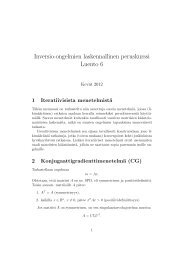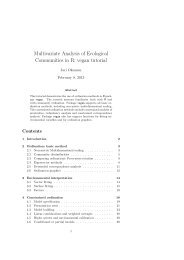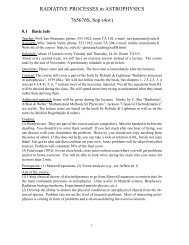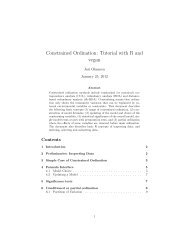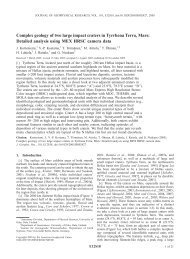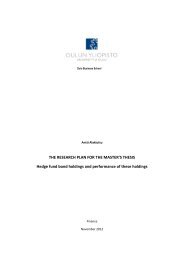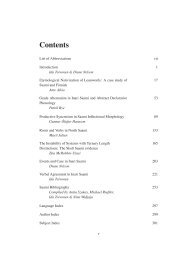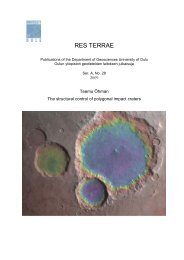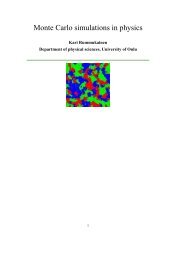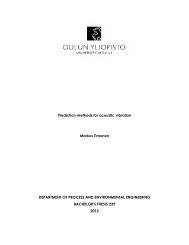Juha Köykkä - Oulu
Juha Köykkä - Oulu
Juha Köykkä - Oulu
- TAGS
- juha
- oulu
- cc.oulu.fi
Create successful ePaper yourself
Turn your PDF publications into a flip-book with our unique Google optimized e-Paper software.
Res Terrae, Ser. A 32, J. <strong>Köykkä</strong>, Sedimentology of the Mesoproterozoic Telemark basin-fills, South Norway: implications for<br />
sedimentation processes, depositional environments and tectonic evolution<br />
Tirsgaard and Øxnevad, 1998; Long, 2004, 2006; Eriksson et al., 2006). Ancient fluvi-<br />
al systems occur in a wide range of paleotectonic settings, and they form an important<br />
part of the Precambrian rock strata. Therefore, the paleohydrological investigations are<br />
important in interpreting ancient fluvial systems and comparison different fluvial<br />
styles/systems during the Precambrian.<br />
Fluvial systems display channel patterns that can be systematically related to sedi-<br />
ment types that describe channel banks, sediment loads, and streamflow characteris-<br />
tics. Braided stream systems tend to usually have laterally confined channels with<br />
well-defined geomorphological elements (channels, banks, floodplains), which result<br />
in complex facies assemblages, and they are thus part of a continuous series of fluvial<br />
forms that develop in quasi-equilibrium with external controls on the river system. The<br />
analysis of fluvial deposits usually comprises variations in flow patterns, sediment<br />
transport rate, stream flow velocity and depth control of bedform textures and struc-<br />
tures, stratification patterns, lithofacies characteristics, and possible large-scale evolu-<br />
tionary architectural elements. By utilizing sedimentology and the paleohydraulic re-<br />
construction of events, the processes operating in ancient fluvial systems can be better<br />
understood.<br />
The sedimentology of the ancient braided stream sedimentation systems and chan-<br />
nel-fills, in different tectonic settings, has been described in many studies (e.g., Eriks-<br />
son et al., 2006, 2008; Long, 2006), but only very few paleohydrological studies have<br />
been made on ancient fluvial deposits (e.g., Van Der Neut and Eriksson, 1999; Eriks-<br />
son et al., 2006, 2008; Davidson and Hartley, 2010). Eriksson et al. (2006, 2008) re-<br />
ported and discussed a possibly unique fluvial style from the Proterozoic (ca. 2.0 – 1.8<br />
Ga) deposits, in the Kaapvaal Craton. This study contributes to this discussion of an-<br />
cient fluvial systems and brings new paleohydrological and sedimentological data<br />
from the ca. 1.17 Ga-old fluvial deposits. These parameters have some sedimentologi-<br />
cal significance as a comparative tool for other ancient deposits, within sedimentary<br />
basins, or comparing paleohydrological data within formations to estimate differences<br />
in paleohydrological patterns in the proximal and distal parts of the formation.<br />
Eleven different sedimentary lithofacies and five lithofacies associations were rec-<br />
ognized from the Svinsaga Formation. The lithofacies assemblages indicate that the<br />
formation represents a relatively high-energy braided fluvial environment. Massive<br />
59



